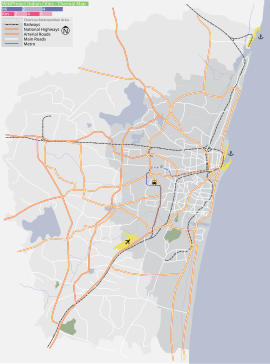In February this year, I was in Chennai for a very short trip and my friend Sridhar showed me around. Per his suggestion, I decided to explore a small piece of Chennai’s history with a visit to Fort St. George. I was also assured by Sridhar that I will be amongst the very few distinguished people (even amongst the local residents) to have seen this Fort.
A quick recap of its history – this fort was built-in the early 17th century by the East India Company to secure their spice trade lines against the possibility of an attack. In 1639 the Company bought a piece of coastal land and permission from a Vijaynagar chieftain named Damerla Chennappa Nayaka, and began the construction of the harbor and the fort. The fort was completed in 1644 on St. George’s Day and hence was christened Fort St George. It originally faced the sea and some fishing villages, but soon also became the hub of all local merchant activity. It also gave birth to a new settlement called George Town (also referred to as Black Town), which subsequently grew to include the surrounding villages and led to the formation of the city of Madras. Within the Fort too, a group of buildings – namely The Fort House, St. Mary’s Church, Fort residencies, Clive’s House, the Grand Arsenal, King’s Barracks and the Exchange House were built at different intervals of times for different purposes (per the needs of the Company).
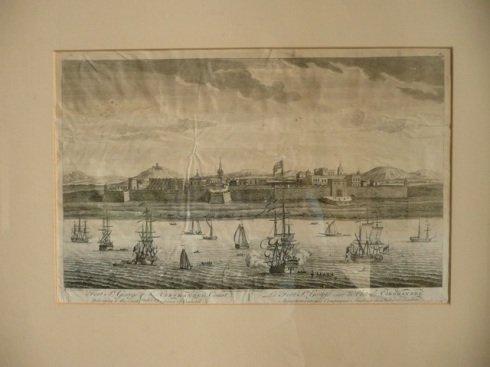
Painting of Old Chennai
We started the visit bright and early to escape the Chennai heat as much as possible. This is a huge complex and we walked around everywhere that was allowed. Since the original Fort House Building is now the Main Secretariat Building housing the state legislative assembly, it does not allow visitors. Hence we just saw it its exterior design from a distance. The design of this building is pretty impressive – with an entire white façade and tall black pillars. However there have been ample efforts made to give this historical building as ugly a makeover as possible. It really pained me to see the gorgeous building with ugly-looking aircons, wires, open pipes hanging all about it. And to top it all they have built the most ugliest possible white building towering all over the complex, that completely ruins the old world charm of the place.
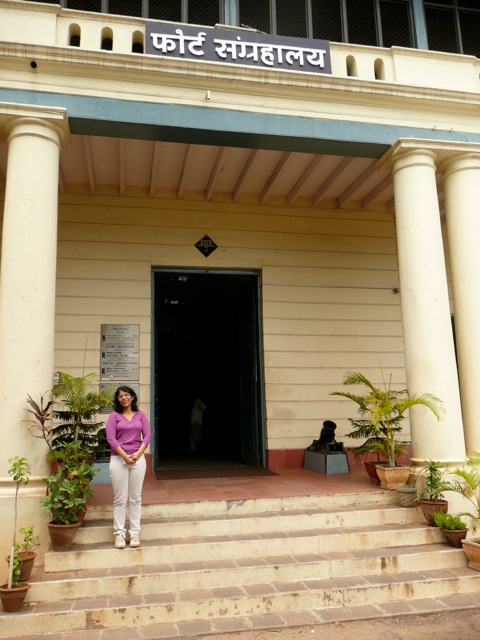
Entrance to the Fort Museum

Exhibits in the museum
Anyways, we then went and visited the Fort Museum, which was built-in 1790 as a Public Exchange by Free Merchants for private trade. The roof of the building was also the site of the first Lighthouse of the city. The small Museum, which was opened in 1948, has may exhibits of the East India Company and the British rule. They have many items such as artillery, coins, uniforms, medals, paintings, the queens memorabilia, original letters, etc. for viewing. I especially loved the collection of coins / currency from across the years.
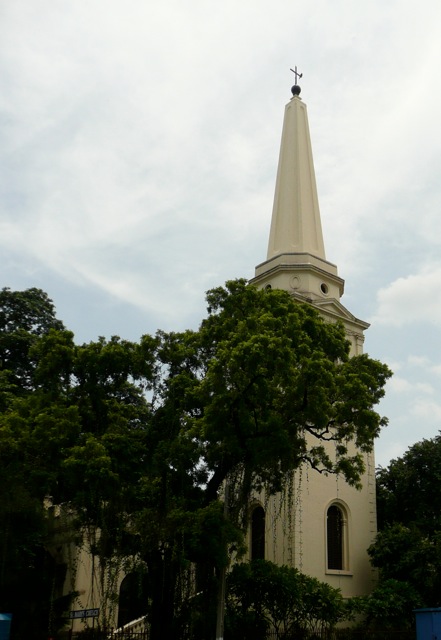
St. Mary’s Church
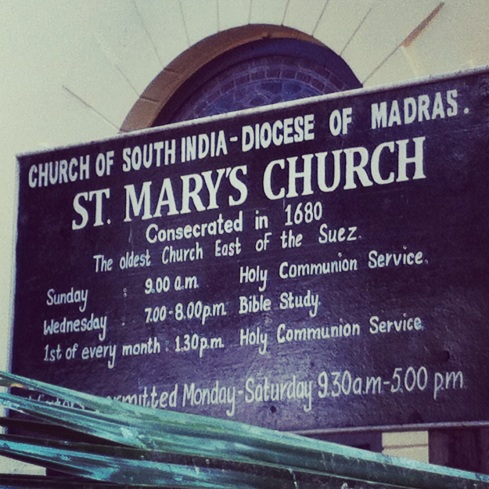
Plaque outside the Church
After seeing the Fort, we went and saw the St. Mary’s Church, the oldest Anglican church in India and also known as the “Westminster Abbey of the East”. It is a small quaint building and I am sure it still looks as it was when it was built.
We then generally walked around and saw the other buildings here – the Fort residencies, Clive’s House, the Grand Arsenal and King’s Barracks from the outside. Some parts of this complex still transport you back in time and you get a feel on how life must have been for people inside these complex.
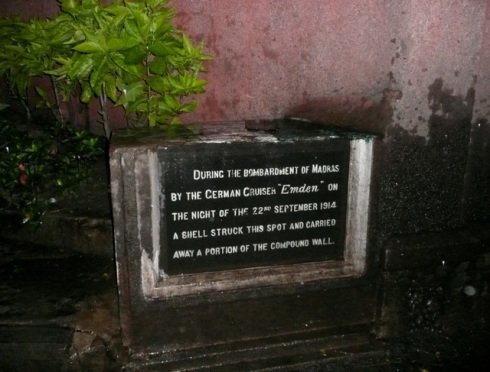
We then walked out of the complex and a short walk later reached the Victory War Memorial, which was constructed to commemorate the victory of the allied armies during the World War I(1914–1918) and later became the victory war memorial for World War (1939–1945). There is also a small beautifully cultivated garden around the memorial and you can sit here for a while and pay your tribute to the brave soldiers and enjoy some moments of solitude.
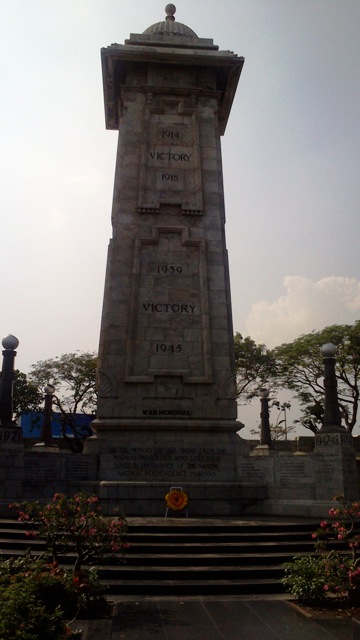
The War Memorial
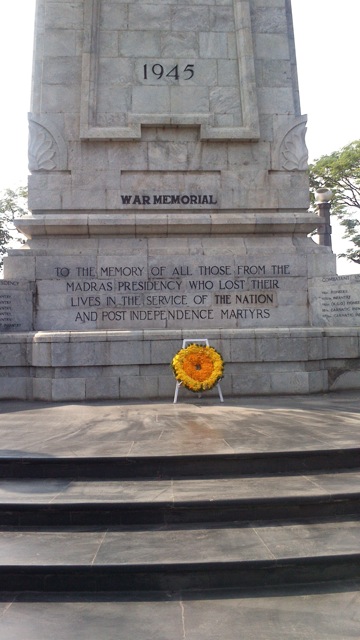
Inscription on the memorial
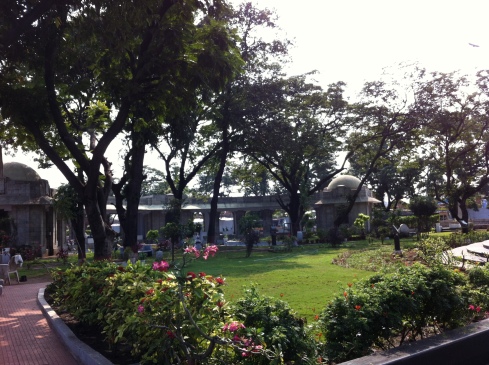
Garden around the memorial
Since the Fort complex houses the state legislative assembly, cameras are now not allowed. Hence I don’t have any pictures of this visit but have borrowed the same from Sridhar. So a big thank you to you, Sridhar for these. In case you are interested, then you can also read more on the history of Fort St George at –
Additional things to see around the Fort are –
- Marina Beach – After visiting the fort, you can actually walk upto the Marina Beach, which the longest natural urban beach (13 kms) in India. Apart from the beach there are numerous statues lining along the promenade. I decided to skip it all as it was super crowded for the weekend.
- Buildings across the Marina Beach – Across the Marina Beach there are some impressive buildings but the best ones that I really liked were the University Buildings (built-in the Indo-Saracenic style with Byzantine and European architectural features) and the Vivekananda House (where Vivekananda stayed when he visited Chennai). A definite must visit.
The Fort St. George of 1640. Photo: special arrangement
As the New Year begins, may I suggest to the Government, which wanted governance returned to Fort St George from what has now become a super-specialty hospital, that it considers celebration of the 375th anniversary of work beginning on the Fort?
Last year, August 22nd marked the 375th anniversary of the land grant to the East India Company where today’s Fort had its beginnings. After several visits to the site from the time of the grant, Andrew Cogan and Francis Day arrived on February 20, 1640 with about 100 or so men to lay the foundations for a settlement neighbouring a fishing village or two. The party included two factors, Humphrey Tompkins and John Browne, two writers, a surgeon, a gunner (at the time considered an all-round engineer of sorts), Lt. Jermin and Sergeant Bradford in charge of 25 aged soldiers, sundry carpenters, blacksmiths and coopers, and some domestic staff, all English. There were also a few Portuguese merchants and the only Indian appears to have been Nagabatthan, a gunpowder-maker. They landed from the Eagle and the Unity , both 100-tonners and each with a crew of 25 Europeans who pitched in with the early work, which comprised building temporary accommodation with local wood and palmyra thatch. Work began on March 1st to a plan drawn up by Cogan, Day and the gunner.
On April 23rd, 375 years ago this year, the construction underway was dedicated to the patron saint of England, whose Day it was, and named Fort St. George. The plan was for an almost square enclosure, with walls about 100 yards on each side, bastions in each corner and a central building diagonal to the square. All this was to be built without any foundations. By the end of 1640, the southeast bastion was completed. Work was far from complete when Cogan decided to transfer the seat of Agency from Masulipatnam to Fort St. George on September 24, 1641 and Madras became the chief factory of the Company on the east coast of India.
With delays for one reason or another — no doubt the example followed to this day when Government construction or restoration is involved — the final wall, the sea wall linking the eastern bastions, was put in place in 1653. The centre of the Fort at that time was 190 yards from the Bay of Bengal on the east and 110 yards from the North River, which in time was to become the Buckingham Canal, on the west. This fort, with what was called ‘The Castle’ in the centre, survived till 1714.
The completion of what later became known as the Inner Fort was during the Agency of Henry Greenhill. During his second Agency he built the far better defence-oriented outer walls round the Inner Fort, the work being completed in 1657. In an aside it may be said that Greenhill who succeeded to Day’s mistress in San Thomé completed what Day had started when the first sods for Fort St. George were turned. Within these walls lived the Europeans of early Madras, the Indian settlers outside them, in Chennapatnam.
In the light of this, if April 23rd gets officially celebrated as Fort St. George Day, could we hope for a couple of nearby roads being named after Andrew Cogan, Francis Day and Beri Thimmappa who negotiated it all?
















